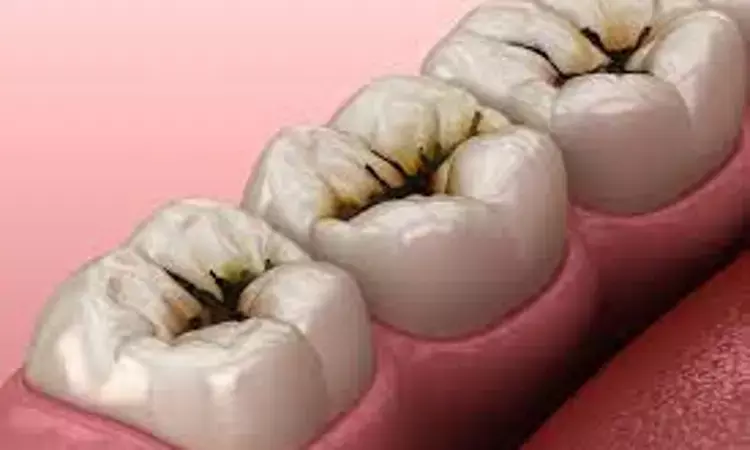- Home
- Medical news & Guidelines
- Anesthesiology
- Cardiology and CTVS
- Critical Care
- Dentistry
- Dermatology
- Diabetes and Endocrinology
- ENT
- Gastroenterology
- Medicine
- Nephrology
- Neurology
- Obstretics-Gynaecology
- Oncology
- Ophthalmology
- Orthopaedics
- Pediatrics-Neonatology
- Psychiatry
- Pulmonology
- Radiology
- Surgery
- Urology
- Laboratory Medicine
- Diet
- Nursing
- Paramedical
- Physiotherapy
- Health news
- Fact Check
- Bone Health Fact Check
- Brain Health Fact Check
- Cancer Related Fact Check
- Child Care Fact Check
- Dental and oral health fact check
- Diabetes and metabolic health fact check
- Diet and Nutrition Fact Check
- Eye and ENT Care Fact Check
- Fitness fact check
- Gut health fact check
- Heart health fact check
- Kidney health fact check
- Medical education fact check
- Men's health fact check
- Respiratory fact check
- Skin and hair care fact check
- Vaccine and Immunization fact check
- Women's health fact check
- AYUSH
- State News
- Andaman and Nicobar Islands
- Andhra Pradesh
- Arunachal Pradesh
- Assam
- Bihar
- Chandigarh
- Chattisgarh
- Dadra and Nagar Haveli
- Daman and Diu
- Delhi
- Goa
- Gujarat
- Haryana
- Himachal Pradesh
- Jammu & Kashmir
- Jharkhand
- Karnataka
- Kerala
- Ladakh
- Lakshadweep
- Madhya Pradesh
- Maharashtra
- Manipur
- Meghalaya
- Mizoram
- Nagaland
- Odisha
- Puducherry
- Punjab
- Rajasthan
- Sikkim
- Tamil Nadu
- Telangana
- Tripura
- Uttar Pradesh
- Uttrakhand
- West Bengal
- Medical Education
- Industry
Both silver diamine fluoride and alternative restorative technique effective for arresting caries: Study

Both silver diamine fluoride (SDF) and alternative restorative technique (ART) are effective for arresting caries, according to a recent study published in the European Archives of Paediatric Dentistry.
This RCT study assessed and compared the effect of a biannual application of 38% silver diamine fluoride (SDF) with an alternative restorative technique (ART) on arresting caries in the primary dentition.
The RCT was conducted over a period of 12 months and included 79 healthy children (237 primary teeth), aged 3–8 years, selected from the University Pediatric Dentistry outpatient clinics, with at least one primary asymptomatic tooth with active dentinal occlusal/labial lesions. Children were randomly assigned to SDF application or ART treatment. Visual and tactile examinations were used after 6 and 12 months to assess the activity of the carious lesions using the ICDAS II.
Results:
At 6- and 12-month-evaluation periods, no statistically significant differences in lesions arrest were found between SDF and ART groups (P = 1.000). Considering the frequency of arrested caries between the test groups at 6 and 12 months, no significant differences were observed between anterior and posterior lesions, as well as between the maxillary and mandibular lesions. When comparing the working time for the two treatments, the median time for those treated with SDF was 3.3 min, compared to 14.4 min for ART and was statistically significant (P < 0.0001).
Thus, the researchers concluded that both SDF and ART are, indeed, effective for arresting caries. However, the chair-time management required for SDF is significantly shorter compared to ART. Taking into consideration the present evidence, the best decision regarding disease management and application of SDF or ART is to be made by the dentist and the patient/parent, recognizing individuals' differences and preferences.
Reference:
Caries arrest effectiveness of silver diamine fluoride compared to alternative restorative technique: randomized clinical trial by H. M. Abdellatif, et al. published in the European Archives of Paediatric Dentistry.
https://link.springer.com/article/10.1007/s40368-020-00592-0
Dr. Shravani Dali has completed her BDS from Pravara institute of medical sciences, loni. Following which she extensively worked in the healthcare sector for 2+ years. She has been actively involved in writing blogs in field of health and wellness. Currently she is pursuing her Masters of public health-health administration from Tata institute of social sciences. She can be contacted at editorial@medicaldialogues.in.
Dr Kamal Kant Kohli-MBBS, DTCD- a chest specialist with more than 30 years of practice and a flair for writing clinical articles, Dr Kamal Kant Kohli joined Medical Dialogues as a Chief Editor of Medical News. Besides writing articles, as an editor, he proofreads and verifies all the medical content published on Medical Dialogues including those coming from journals, studies,medical conferences,guidelines etc. Email: drkohli@medicaldialogues.in. Contact no. 011-43720751


